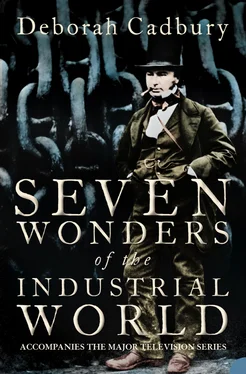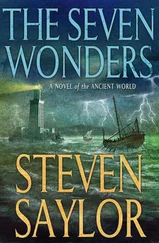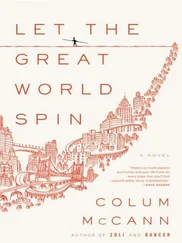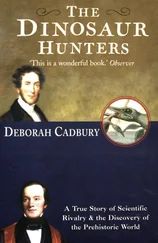An article in The Observer in November 1854 sparked the first open clash. The paper had mistakenly credited Scott Russell with playing the major role in the design of the Great Ship. They quoted him ‘as carrying out the design’ and claimed that Mr Brunel had merely ‘approved of the project’. Brunel was furious and he wrote to Eastern Steam company secretary John Yates, correcting this error in no uncertain terms. He strongly suspected that Russell or one of his men had leaked the article. ‘This bears rather evidently a stamp of authority, or at least it professes to give an account of detail which could only be obtained from ourselves,’ he wrote. ‘I cannot allow it to be stated, apparently on authority, while I have the whole heavy responsibility of success resting on my shoulders, that I am the mere passive approver of the project of another, which in fact originated solely with me and has been worked out by me at great cost of labour and thought devoted to it for not less than three years.’ Quite how the information had reached The Observer was never ascertained.
Difficulties increased during the winter of 1854 with Scott Russell facing growing financial problems following the death of Charles Geach. His bank refused to give him any more credit, so he asked the board of Eastern Steam if he could be paid in future on a regular monthly basis for work accomplished. In April 1855, there was another fire at his yard and, while no damage was done to the Great Ship, he bore a further loss of £45,000. Faced with these difficulties and endless delays in construction at Scott Russell’s yard, Brunel was reluctantly forced to concede that the launch date, originally planned for October 1855, would have to be deferred.
A fundamental conflict between the two men arose over the method of launching the Great Ship. At an estimated 12,000 tons, this was the largest weight ever moved by man and it needed to be moved 200 feet into the river. Brunel had given much thought to the problem and had come to the conclusion that the only way to achieve this was through a ‘controlled’ launch. This was a most unusual procedure. Pushing the mighty 700-foot-long ship sideways into the river seemed fraught with problems, but Brunel, undaunted, insisted it was the only way to launch her. Anything else would be a disaster. He envisaged the possibility of the ship getting stuck or, worse, moving into the river far too quickly and keeling over or breaking up. He preferred to err on the side of caution and planned to use restraining chains to control the ship’s progress gently down the slope.
Scott Russell was totally opposed to a controlled launch. He pointed out that ‘free’ launches, admittedly of smaller ships, were carried out on the Great Lakes of America successfully. He was also worried about the cost of a controlled launch. Since Scott Russell was under contract to launch the ship and Brunel’s plan was estimated to cost an extra £10,000, he was not to be moved on this subject.
Throughout the spring and summer of 1855, Brunel was concerned as Scott Russell became increasingly uncooperative. He would be unavailable, slow in replying to letters and vague with the information that he did give. Brunel needed specific facts that would enable him to work out launching requirements and his irritation with Scott Russell grew. ‘I begin to be quite alarmed at the state of your contract,’ he wrote. ‘Four months are gone and I cannot say even the designs are completed … to justify a single bit of work being proceeded with.’ In May 1855, he wrote again to Russell in an exasperated tone: ‘Your reply this morning to my long list of complaints is an admirable specimen of an Under-Secretary’s reply in the House to a Member’s motion – it does not satisfy one single honest craving for information and for assurance of remedy … I do not want better indicators than usual … Those made on this occasion and to which I object were absurd – like the attempts at writing of a two year old baby.’
As the summer wore on, Scott Russell, faced with yet another fire at his yard, became more and more immersed in his financial uncertainties. And Brunel was totally consumed with giving life to his creation; transforming so many lifeless tons of iron and wood into the majestic shape of his inner vision. To this end he was always occupied, dealing with endless problems and finding endless solutions. He went to Haverfordwest in Wales to organise jetties where the Great Ship would take on coal. He found the man whom he felt had the necessary qualities and experience to captain his great ship: William Harrison. There were also detailed discussions to be had on the design of the engines. Brunel was soon worried to hear that Scott Russell was not fulfilling his contract. It had become apparent that the work on the hull was not commensurate with the amount of money Scott Russell had received. Scott Russell had in fact been paid the bulk of the money, but there was still a massive amount of work to do before the hull was anywhere near complete. Brunel slept only four hours a night and worked like a man possessed.
By late summer, Brunel was still trying to get information from Scott Russell that might affect plans for the launch of the ship. Again, he wrote requesting information from Scott Russell concerning the centre of gravity for the ship and, again, he felt the reply he received was too vague. Scott Russell meanwhile wrote with a request for more money – £37,673 to be precise. He argued that this sum was for extra work – alterations that Brunel had made to the original designs. This led to lengthy arguments and nurtured the growing distrust between the two men. Scott Russell did provide a launch date for March 1856 but infuriated Brunel by carelessly giving the wrong information on the tonnage of the vessel. Brunel was angry. ‘How the devil can you say you satisfied yourself at the weight of the ship,’ he wrote to Scott Russell in October 1855, ‘when the figures your clerk gave you are 1,000 tons less than I make it or than you made it a few months ago – for shame – if you are satisfied. I am sorry to give you more trouble but I think you will thank me for it – I wish you were my obedient servant, I should begin by a little flogging.’
By now, very little charm was wasted in dealings between the two men. Scott Russell replied with a request for more money needed to pay the banker, Martin’s Bank, who held his yard in mortgage. The Great Ship, it seemed, was eating money and he could not obtain credit from anywhere. He wrote again to Brunel insisting on regular payments, saying, ‘I fear I shall get into trouble unless we can see our way to a definite arrangement for the future. I am keeping an enormous establishment of people night and day. I either must have payment with certainty or reduce my number of hands.’ Trying to ease the strain on his finances, Scott Russell had taken orders for six other smaller ships, which he was building in the yard of the Great Ship, and on which the labour force was increasingly deployed. To add to Brunel’s disgust, the smaller craft in the yard were so placed that essential work on the Great Ship was made impossible. And still Scott Russell had not produced the information needed for the launch. Brunel wrote again on 2 December 1855, ‘I must beg you to let me have with the least possible delay the correct position of the centre of flotation at the 15’ draft line … I cannot stand any longer the anxiety I have felt ever since we commenced the ship as to her launching.’
Yet no information was forthcoming from Scott Russell. Whether Scott Russell was deliberately holding back the information Brunel required in the hope that he would be forced eventually into a cheaper uncontrolled launch is not known. Brunel defeated him; he managed to ascertain the centre of flotation and soon had plans prepared for the launching cradles and launch-ways. Scott Russell complained to the board, pointing out that the controlled launch had not been part of the original plan and that the additional cost he faced was prohibitive.
Читать дальше












